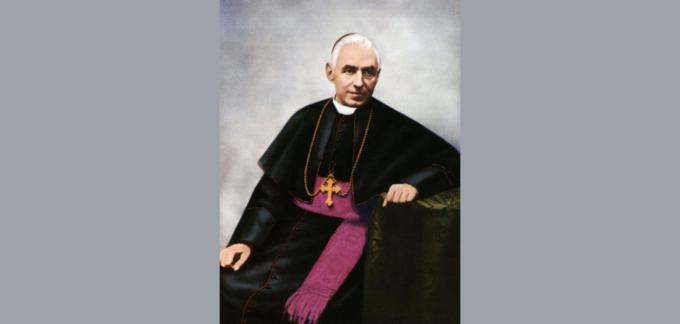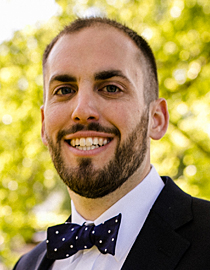
Culture


Lester
Earlier this month, on Oct. 9, Giovanni Battista Scalabrini, founder of the Missionaries of St. Charles Borromeo (commonly known as the Scalabrini Fathers) and Missionary Sisters of St. Charles, was canonized. His life and deeds have been highlighted in many publications so, rather than reiterate these facts, we are glad to share some episodes about the arrival of the Scalabrini Fathers in Boston and St. Scalabrini's visits in September and October of 1901.
Prior to the arrival of the Scalabrini Fathers, St. Leonard of Port Maurice Parish was established in Boston's North End, intended to serve the Italian-speaking population residing in that neighborhood. From the time of its dedication on Feb. 23, 1876, the vibrant parish life attracted many Catholics, not just those who spoke Italian, and the space soon proved too small for the congregation, while the parish continued to carry a large debt. In 1884, only eight years after its dedication, some parishioners formed the San Marco Society with the intention of finding a new place of worship for the Italian-speaking Catholics, one that would provide adequate space, would be done without amassing a large debt, and be owned and administered by lay people.
Archbishop John Williams refused to sanction their activities; several decades prior it had been established that lay people were not permitted to act as owners and administrators of church property nor choose their own priests. A stalemate ensued until the arrival of the first Scalabrinian priest in Boston, Father Francesco Zaboglio, in 1888, only one year after the missionary society was founded.
One source indicates that he was invited by the San Marco Society, and while Archbishop Williams gave him permission to set up a place of worship for the Italian-speaking Catholics, it was under the condition it would not be the site the society had purchased in North Square. Father Zaboglio complied, and leased a hall at 86 Beverly Street, sometimes referred to as Sacred Heart Chapel, which opened on Dec. 23, 1888.
Father Zaboglio's presence offered a solution to both parties, and within a short time, the San Marco Society ceded their property to Archbishop Williams, who then provided it for use by Father Zaboglio and the Scalabrini Fathers. The new church was dedicated to the Sacred Heart on May 25, 1890.
Just over one decade later, in July 1901, it was announced that Bishop Giovanni Scalabrini was planning to visit Italian settlements and missions in the U.S. On July 20, he sailed from Genoa on the steamer Liguris, and arrived in Boston on the evening of Thursday, Sept. 5, 1901.
Greeting him at Back Bay Station was a crowd containing representatives of over 30 Italian sodalities and other religious organizations. A procession of about 100 open top carriages decorated with banners of the various organizations carried the bishop and representatives of the organizations through the city streets towards Sacred Heart Church.
As the carriages approached the North End, the scenes must have been incredible to witness, the neighborhood set alight by thousands of Chinese lanterns and candles all red, white, blue, and green to honor both Italy and the United States. Onlookers filled the streets and sidewalks, perched in windows, sat on fire escapes, and climbed telegraph poles hoping to catch a glimpse of the bishop. At one point, the street was so crowded the procession paused while the police escort cleared a path.
In front of Sacred Heart Church, illuminated by red, white, and blue lights was a cross bearing a sign that read "Long live the Bishop." Bishop Scalabrini entered the church and delivered a brief address, gave the Benediction of the Blessed Sacrament, and then the blessing of Pope Leo XIII, as well as his own, thus concluding the evening's events.
The following day, Friday, Bishop Scalabrini met with Archbishop Williams, and took the rest of the day and the following day to rest.
Sunday, Sept. 8, was intended to be the height of the bishop's visit, with two morning Masses and an afternoon confirmation ceremony at Sacred Heart Church. A parade of Italian civil and religious societies was to follow, ending in North Square, where they would be reviewed by Bishop Scalabrini from a platform erected for that purpose, and from which he would address the crowd.
What was meant to be a joyous celebration took a somber tone when news arrived that on the evening of Sept. 6 an attempt had been made on the life of President William McKinley. Bishop Scalabrini insisted that all events be canceled with the exception of the church services.
Bishop Scalabrini celebrated Mass at 9 a.m. and assisted at a second at 11 a.m. Mass. In his sermon, he reminded the congregation that the Church demanded of them two things -- obey her laws and obey the laws of the country in which they are living. He also commented on the attempted assassination of President McKinley and led a prayer for his recovery. The confirmation ceremony took place at 3 p.m., and parish records reveal 863 children received the sacrament.
Three days later, on Sept. 11, 1901, he accepted an invitation from the Italian community in Boston's South End, attending evening services at St. James the Greater on Harrison Avenue. It was believed that President McKinley was recovering from his wounds (he would succumb to them on Sept. 14), so it was followed by a public reception in the North End that had originally been scheduled for the previous Sunday. A band serenaded those in North Square which was once again illuminated. It was expected that "Bishop Scalabrini would say a few words to the people, but he was too fatigued and contented himself with waving them an adieu from the outer door of the parochial house."
Bishop Scalabrini departed Boston on the following day to visit his missionary priests in Utica, New York. As he stepped out of the Sacred Heart rectory at 10 a.m., he was greeted by hundreds of local residents, and paused for several minutes to bless the small children and shake hands with the adults before proceeding to South Station.
He would return to Boston the following month while journeying home. On Oct. 27, he visited Our Lady of Czestochowa in South Boston, celebrating Mass in the morning and, in the afternoon, confirming 600 Catholics, mostly adults, who came from as far as Salem, Worcester, and Chicopee.
- Thomas Lester is the archivist of the Archdiocese of Boston.
Recent articles in the Culture & Events section
-
What is truth?Michael Reardon
-
The 75th anniversary of St. Ignatius of Loyola Church, Chestnut HillThomas Lester
-
The most important prayer you already knowLaura Kelly Fanucci
-
Two years after DobbsRussell Shaw
-
Scripture Reflection for July 21, 2024, Sixteenth Sunday in Ordinary TimeDeacon Greg Kandra





